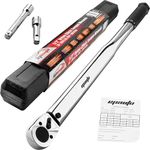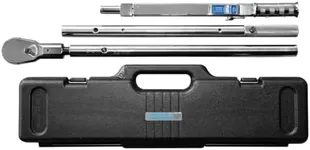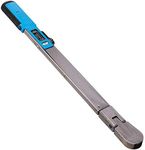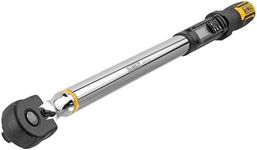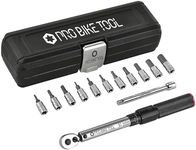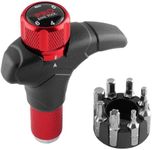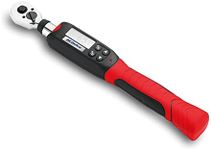Buying Guide for the Best Torque Wrenches
Choosing the right torque wrench is important for anyone who needs to tighten bolts or nuts to a specific level of tightness, such as in automotive, bike, or machinery work. The main goal is to ensure that fasteners are neither too loose nor too tight, which can prevent damage and ensure safety. When picking a torque wrench, you should consider how you plan to use it, the range of torque you need, and how easy it is to read and use. Understanding the key specifications will help you select a tool that matches your needs and gives you reliable results.Torque RangeThe torque range tells you the minimum and maximum force the wrench can apply, usually measured in Newton-meters (Nm) or foot-pounds (ft-lb). This is important because using a wrench outside its rated range can lead to inaccurate results or even damage the tool. Lower ranges (like 5-25 Nm) are good for small jobs such as bicycles or electronics, while mid-ranges (20-100 Nm) suit most car maintenance tasks. Higher ranges (100 Nm and above) are for heavy-duty work like trucks or industrial equipment. To pick the right range, think about the types of jobs you’ll do most often and choose a wrench where your typical tasks fall in the middle of its range for best accuracy.
Drive SizeDrive size refers to the size of the square fitting where you attach sockets, commonly 1/4-inch, 3/8-inch, or 1/2-inch. This matters because it determines what size sockets you can use and how much torque the wrench can handle. Smaller drive sizes (1/4-inch) are for light, precise work, 3/8-inch is versatile for most car and home tasks, and 1/2-inch is for larger bolts and higher torque needs. Choose a drive size that matches the sockets you already have or the type of work you plan to do most.
AccuracyAccuracy is how close the wrench comes to the actual torque value you set, usually given as a percentage (like ±4%). This is important because precise torque is critical for safety and performance, especially in automotive or mechanical work. Most quality wrenches have an accuracy of ±4% or better. If you need high precision, such as for engine work, look for a lower percentage. For general use, standard accuracy is usually sufficient.
Type of Torque WrenchThere are several types: beam, click, digital, and dial. Beam wrenches are simple and durable but require you to watch a scale. Click wrenches make a sound or feel when you reach the set torque, making them easy to use. Digital wrenches show readings on a screen and may have extra features like alerts. Dial wrenches are very accurate but can be more expensive. Choose a type based on your comfort with reading scales, your need for precision, and whether you want extra features like digital readouts.
Scale and ReadabilityThe scale is how you set and read the torque value. Some wrenches have engraved or printed scales, while digital ones have screens. This is important because a clear, easy-to-read scale helps prevent mistakes. If you often work in low light or need to switch between units (Nm and ft-lb), a digital display or a wrench with a clear, contrasting scale can be helpful. Pick a wrench with a scale you can read easily in your typical working conditions.
Build Quality and MaterialBuild quality refers to how sturdy and well-made the wrench is, often determined by the materials used, like steel or chrome vanadium. This matters because a well-built wrench will last longer and stay accurate over time. If you plan to use the wrench frequently or in tough environments, look for one with a solid, durable construction. For occasional use, a lighter or simpler build may be enough.
